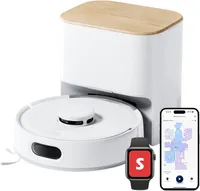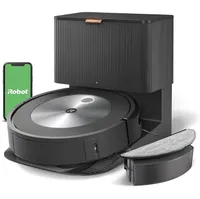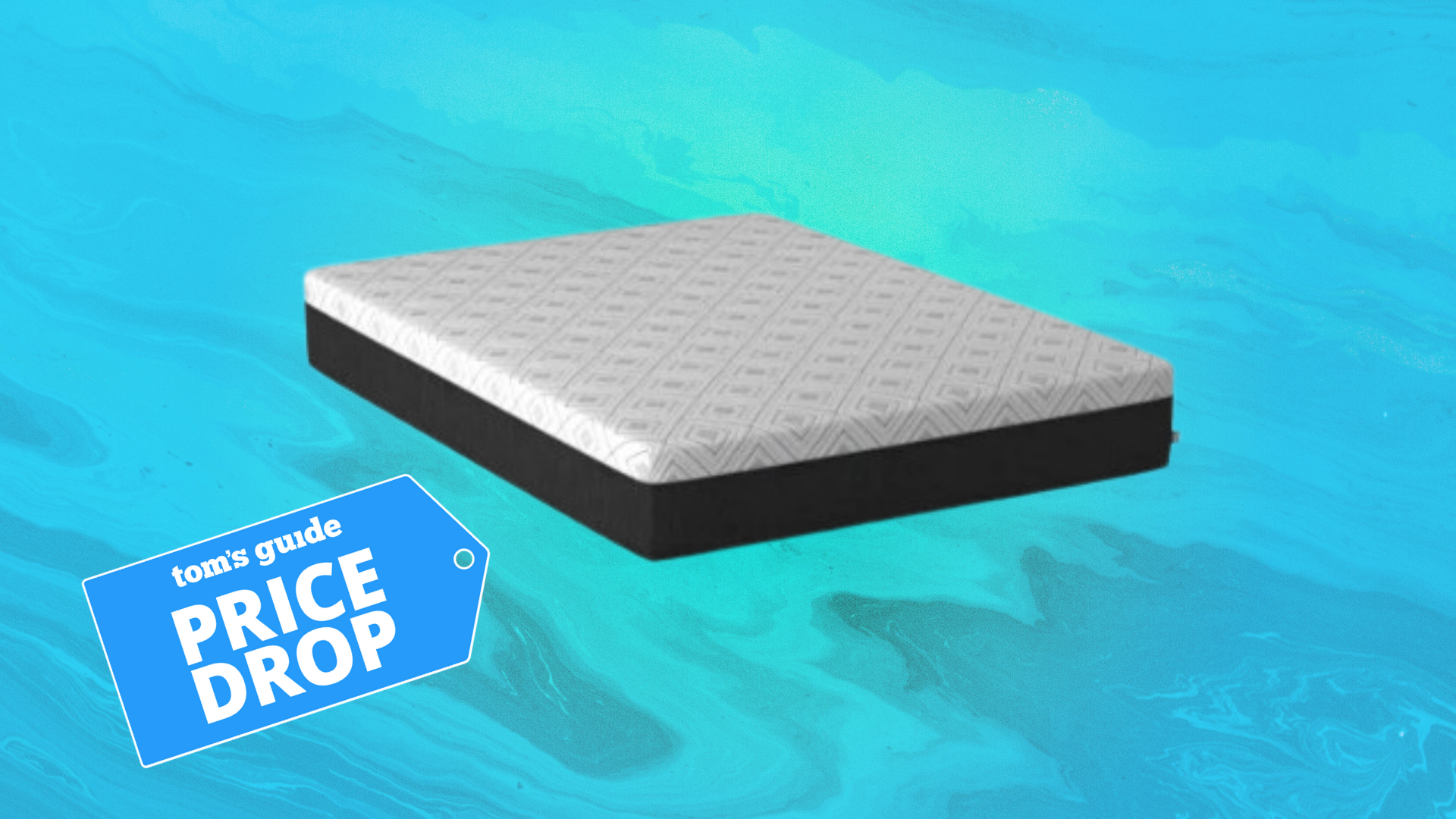Best cheap robot vacuums in 2025
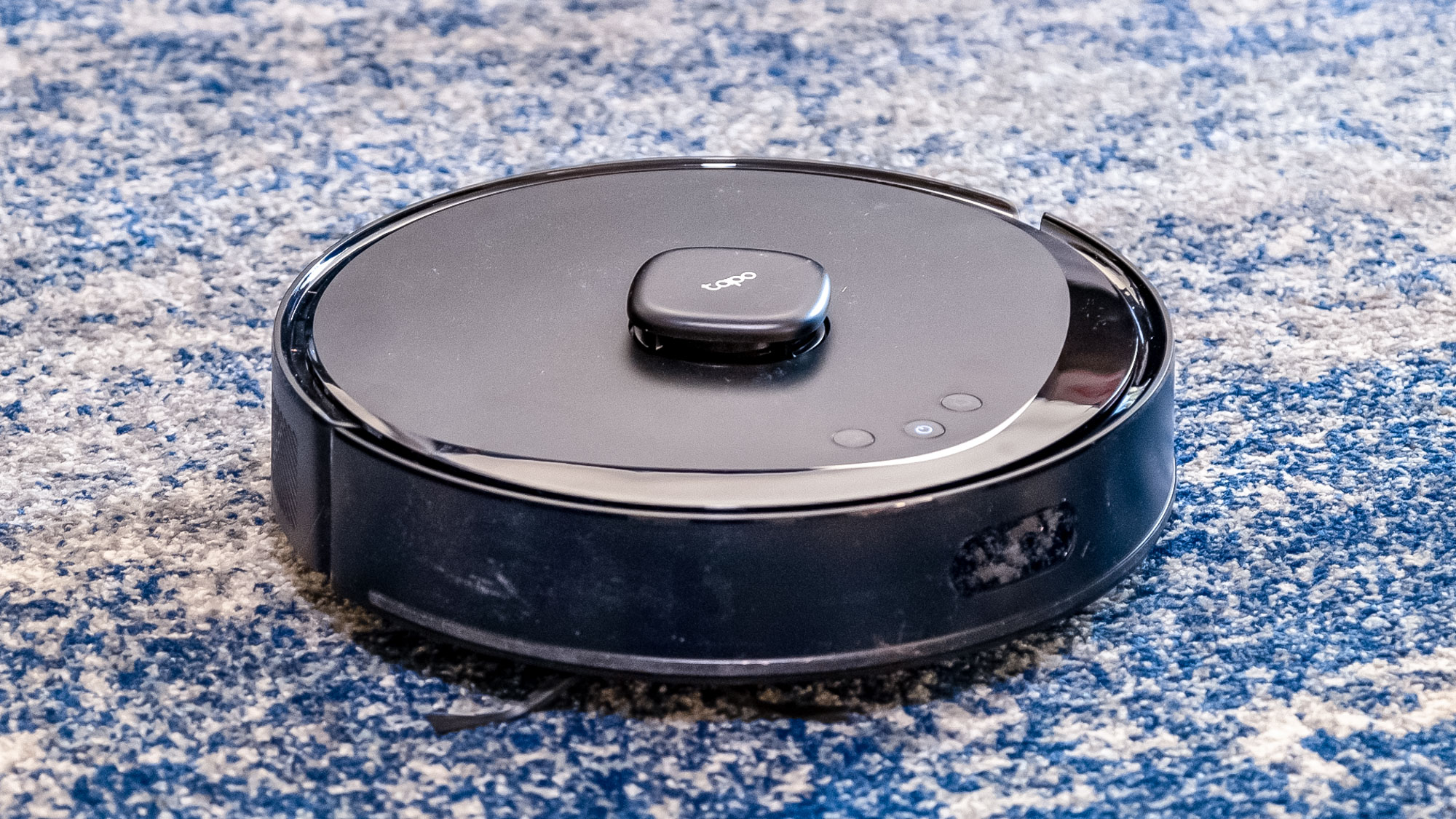
Having clean floors shouldn't be costly, and the best cheap robot vacuums are a great alternative to the high-end robot vacuums. These budget-friendly options keep the basics intact, so you get powerful cleaning performance without spending a fortune.
We tested a wide range of robot vacuums to find value cleaners that punch well above their weight in performance for the low price. If you want a cleaner for everyday use, our overall winner was the TP-Link Tapo RV30 Max Plus. This came tops for overall cleaning, particularly for debris pick-up. Or if you have mainly hard floors, the Narwal Freo Pro is a budget mop and vacuum with impressive mapping and hair pick-up.
To help you decide, here are our best cheap robot vacuum picks for every home and need.
Earlier in 2025, iRobot issued a warning to investors that they could face closure within a year, in part due to high levels of debt. This came only a day after the company announced new Roomba robot vacuum cleaners. It's an uncertain time, and while it'll be some months before we know what'll happen to the brand next, and there are currently no signs that anything will change, but since many features rely on the company's services and app, should these close, you may lose out on some of the device's functions.
The quick list
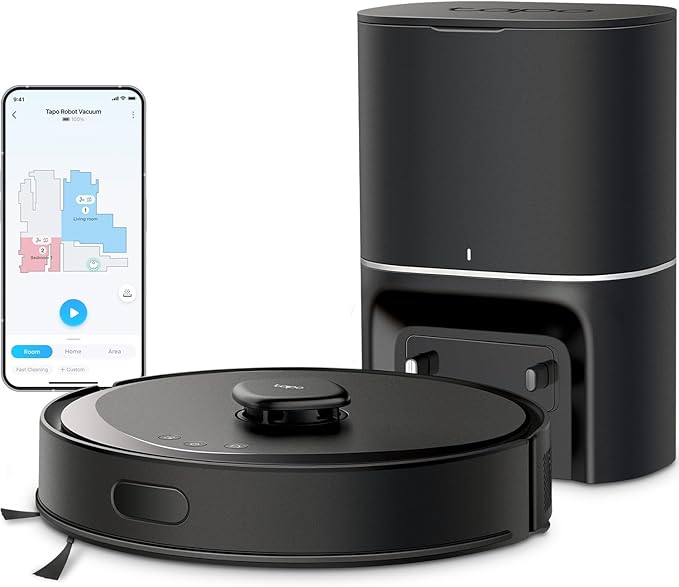
If you want top performance at a budget price, the Tapo RV30 Max Plus offers excellent value. Great for both hardwood and carpets, it can handle your daily clean-ups, picks up smaller debris and navigates with ease. It also has a great app and smart home features, which makes this a bargain buy.
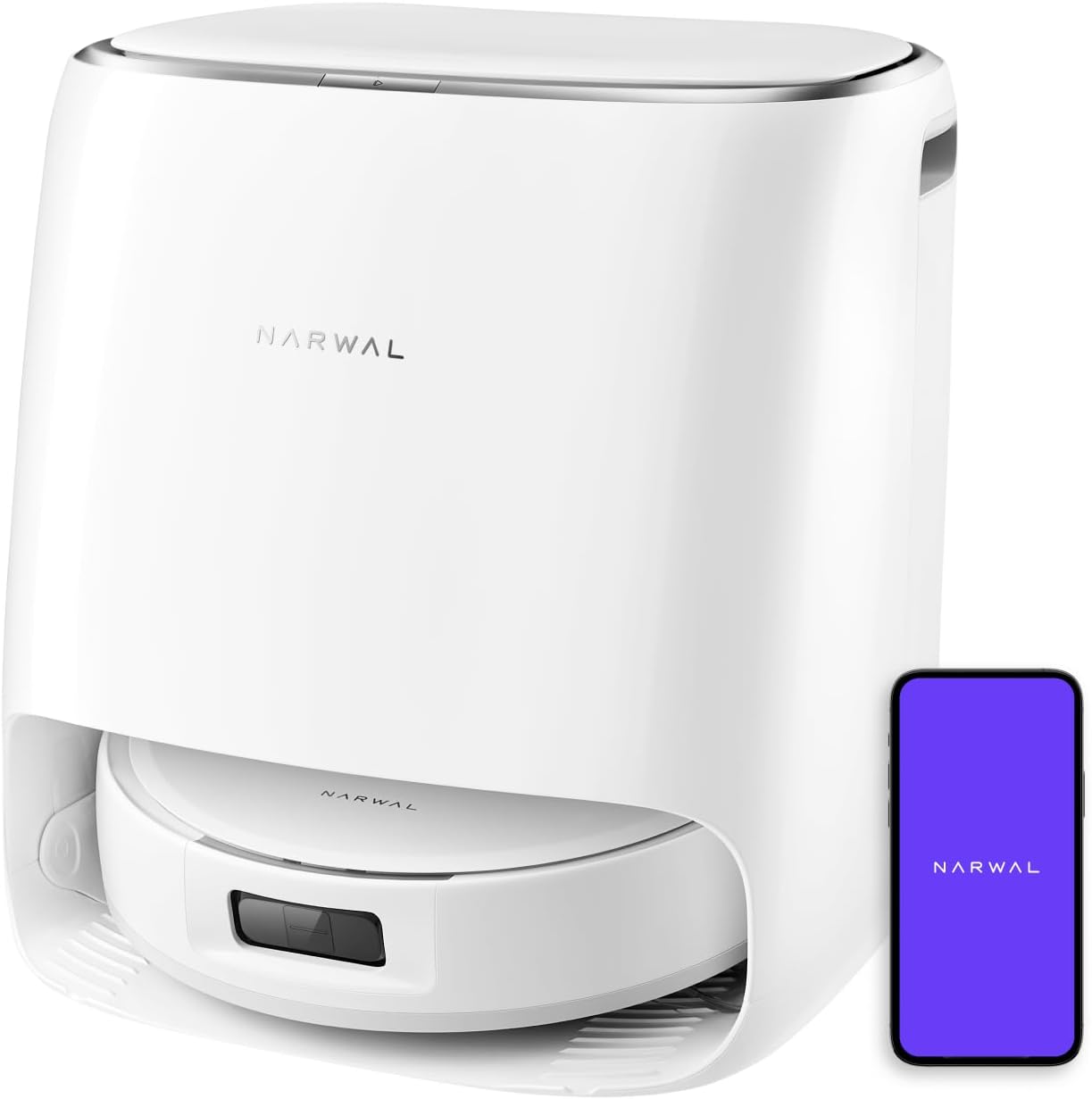
The Narwal Freo Pro is a hybrid robot vacuum and mop that handles everyday messes. It excelled in pet hair pick-up, scoring an impressive 99% across hard floors and carpet. Plus, its anti-tangle brush prevented any clogs from long hair. It also has an all-in-one station with self-cleaning, auto dry and more — for ultimate hands-free cleaning.
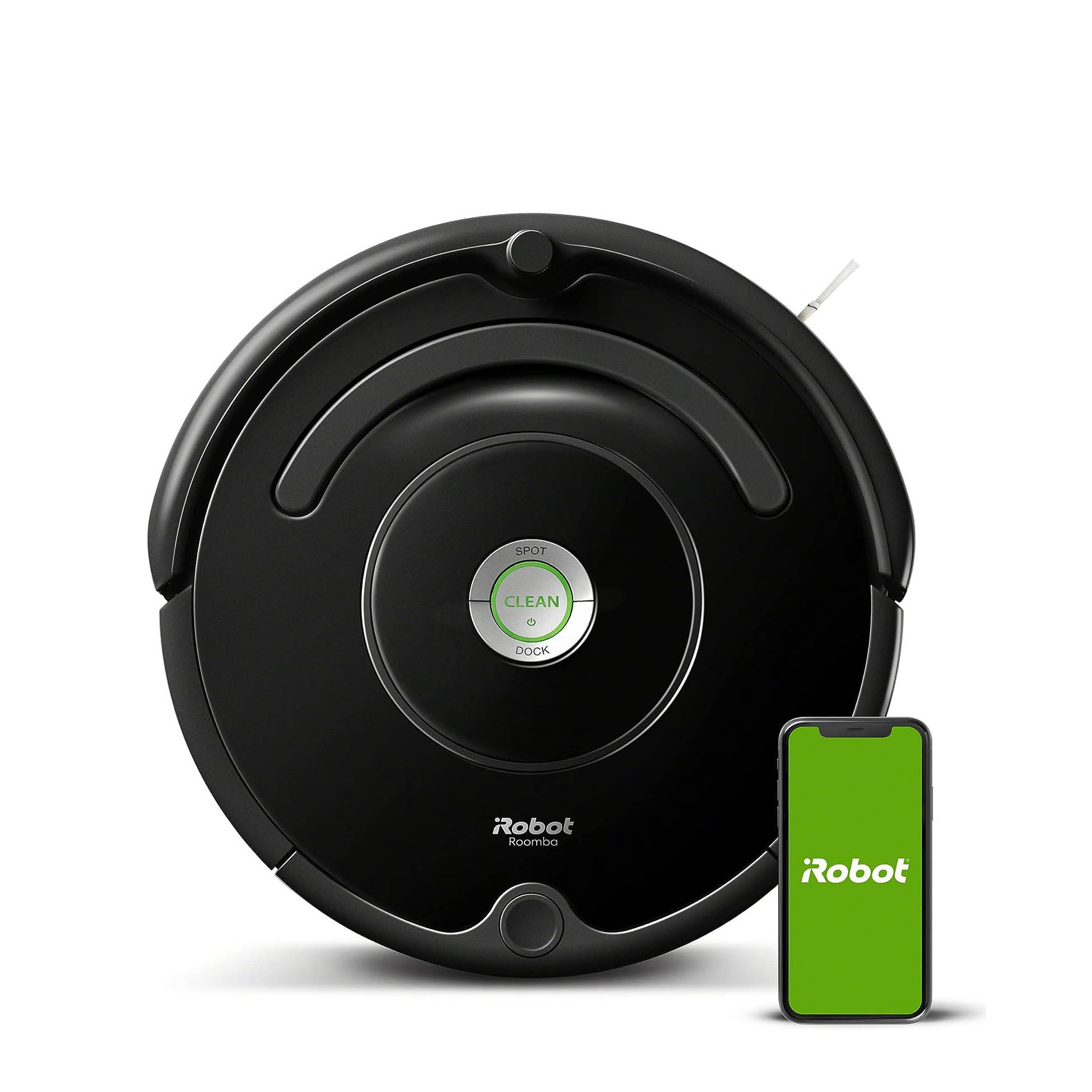
Roomba's cheapest robot vacuum still provides some premium features. Its automatic dirt detection more thoroughly cleans the rooms that need it, while the iRobot app will make seasonal recommendations to fight off pollen or dirt. In addition to advanced scheduling and remote controls, this bot also features Wi-Fi connectivity and voice control via Alexa or Google Assistant.
The best cheap robot vacuums you can buy today
Why you can trust Tom's Guide
Best cheap robot vacuum overall
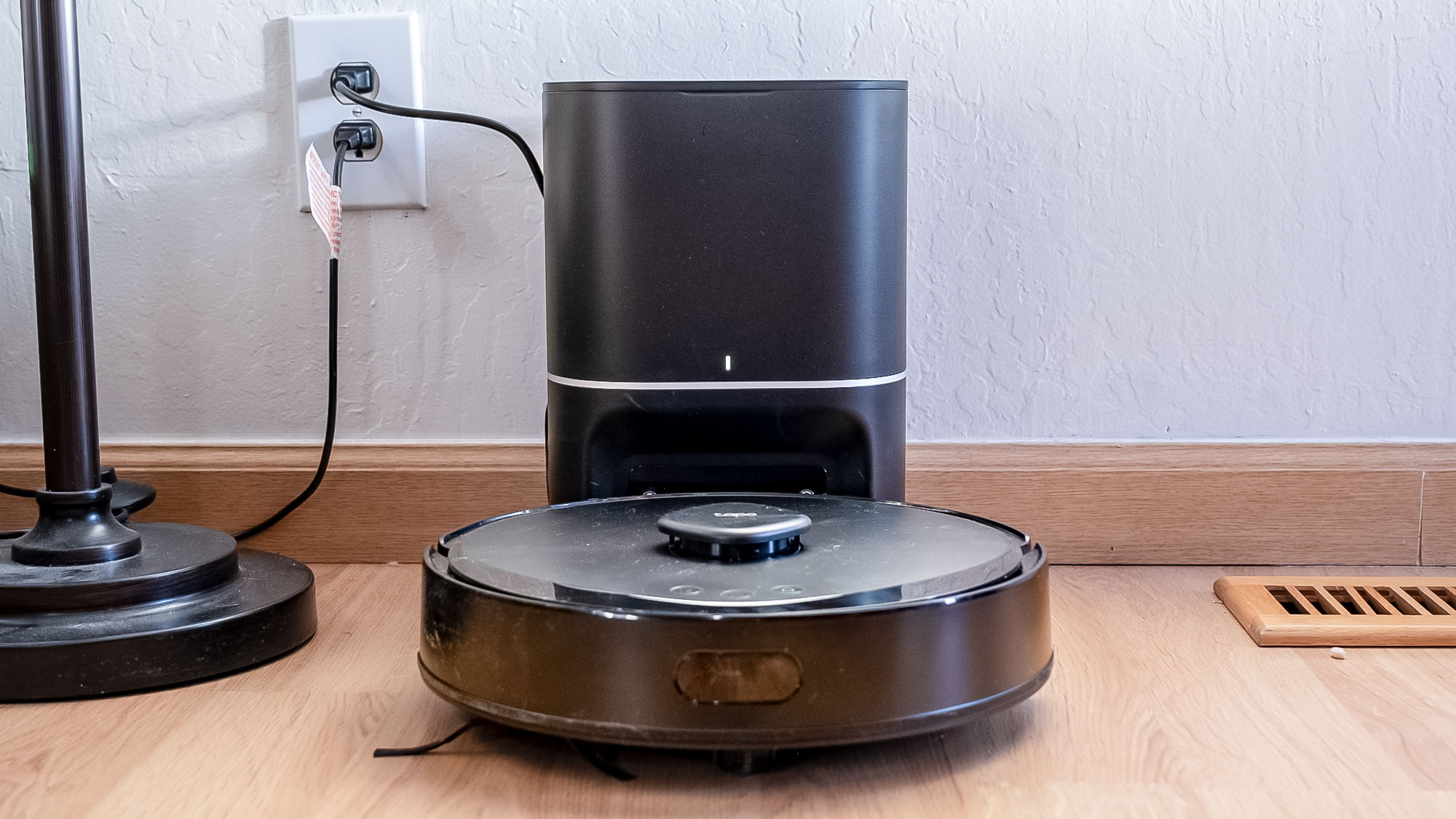
TP-Link Tapo RV30 Max Plus review

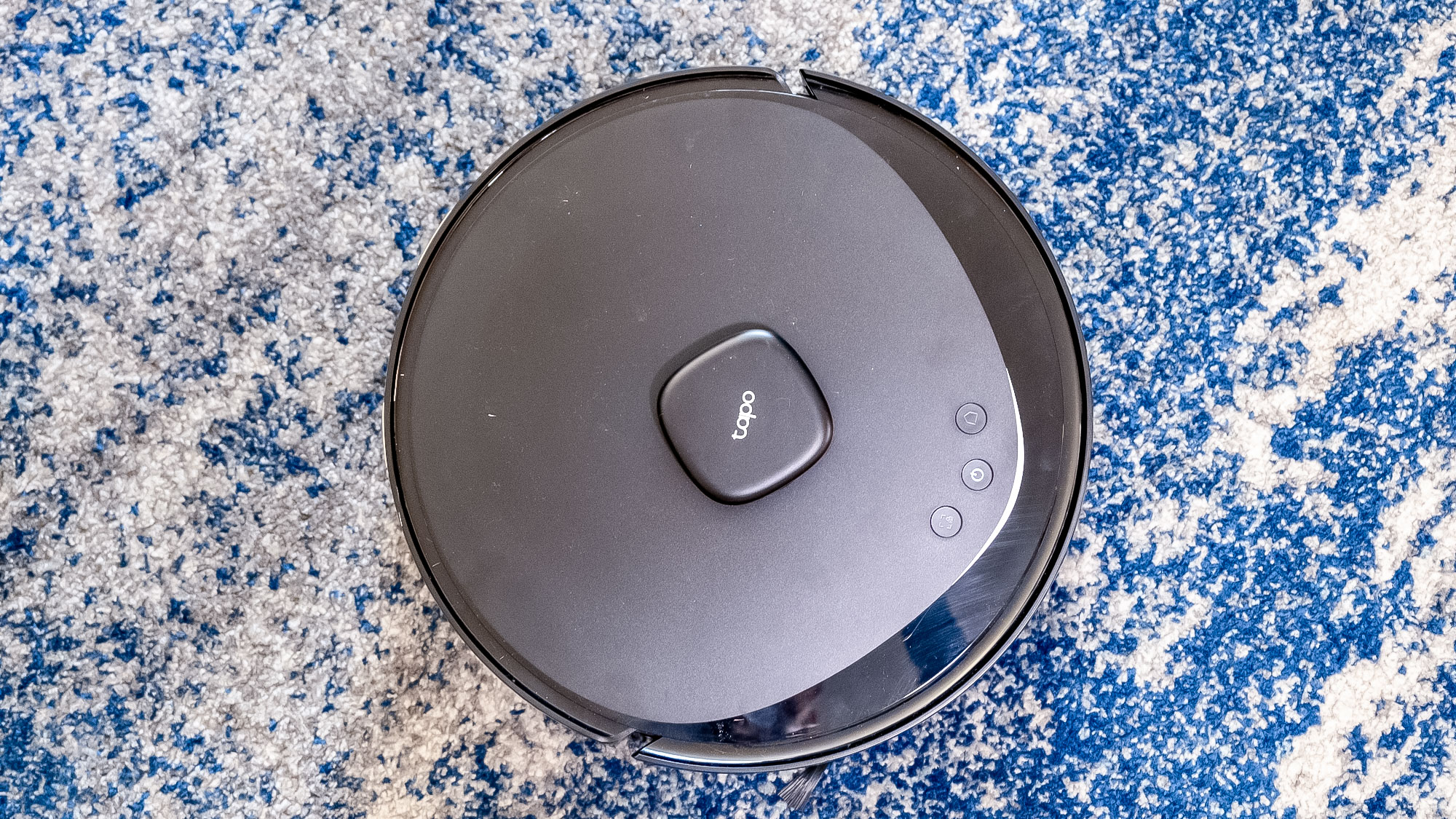

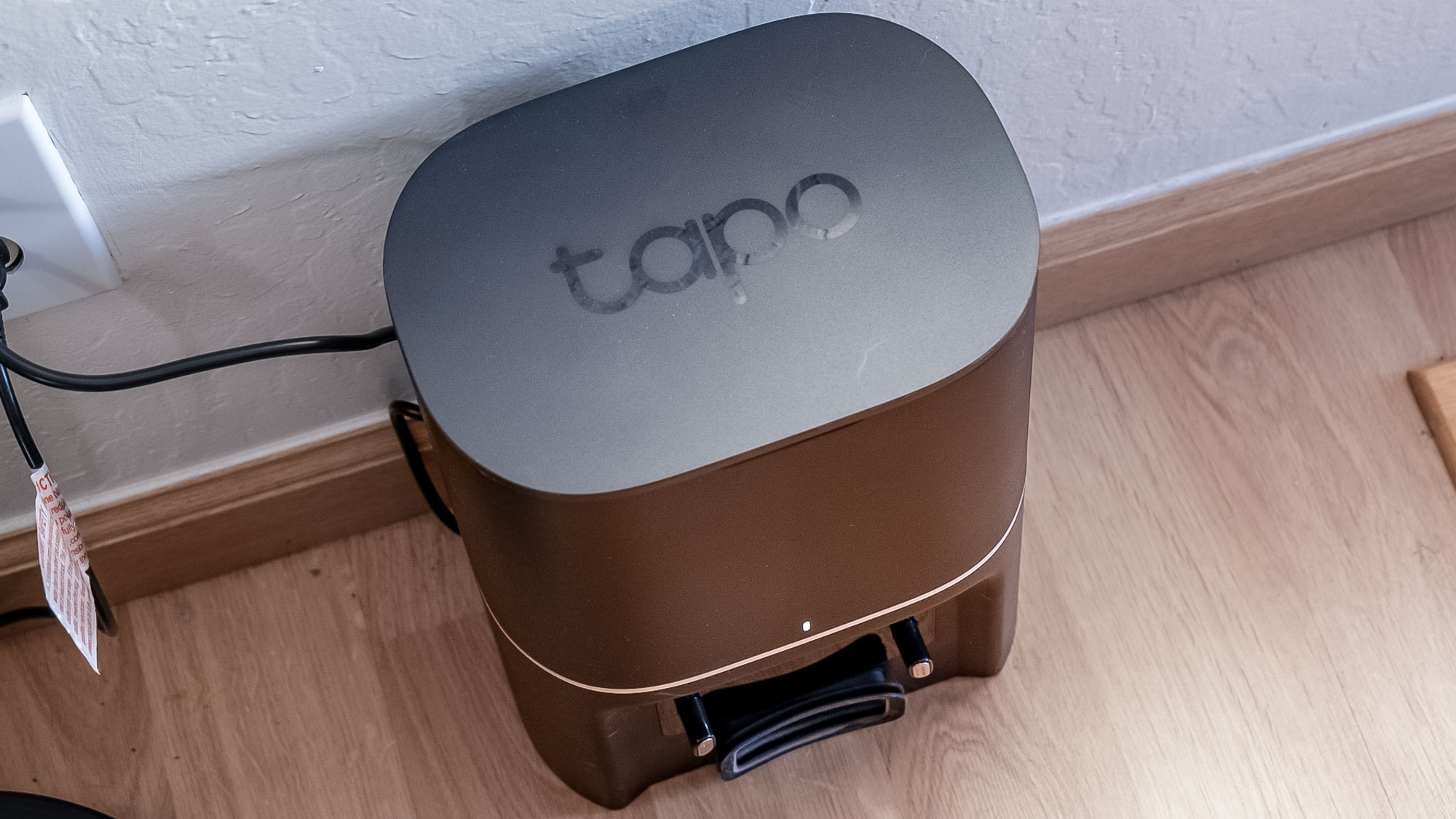
Specifications
Reasons to buy
Reasons to avoid
The RV30 Max Plus proves that you don’t have to spend a fortune on a decent robot vacuum. And if you're on a budget, we recommend the Tapo RV30 Max Plus as one of the best cheap robot vacuums you can get for around $200.
Our tester, Christian, put this to the test around his home and was instantly taken by its compact and ergonomic design. Despite its compact size, it performed well with basic cleaning, and excelled at sucking up cereal and kitty litter on both carpet and hardwood floors.
Similarly, Christian was impressed by its mopping abilities, however don’t expect it to do a deep clean or remove tough, sticky stains. Still, it does a great job for basic clean-ups that won't be demanding.
What’s more, Christian thought the app is well designed and easy to navigate — which was a little surprising given the fact that the Tapo app isn't just built for robotic vacuums, but all of the TP-Link Tapo smart home devices.
Perhaps the only disappointment was it struggled with large amounts of pet hair on carpet, (given the lower 5300 pa, that's to be expected), and be prepared to clean the mop pad yourself. However, for a robot vacuum in its price range, this is an excellent, budget option for daily use.
TP-Link Tapo RV30 Max Plus test results (out of 100)
| Header Cell - Column 0 | Overall | Cheerios | Kitty Litter | Pet Hair |
|---|---|---|---|---|
Hardwood Floor | 98.8 | 99.4 | 91.7 | 82 |
Carpet | 90.7 | 98 | 90.7 | 80.6 |
- Read our full TP-Link Tapo RV30 Max Plus review.
Best cheap robot hybrid vacuum for pet hair
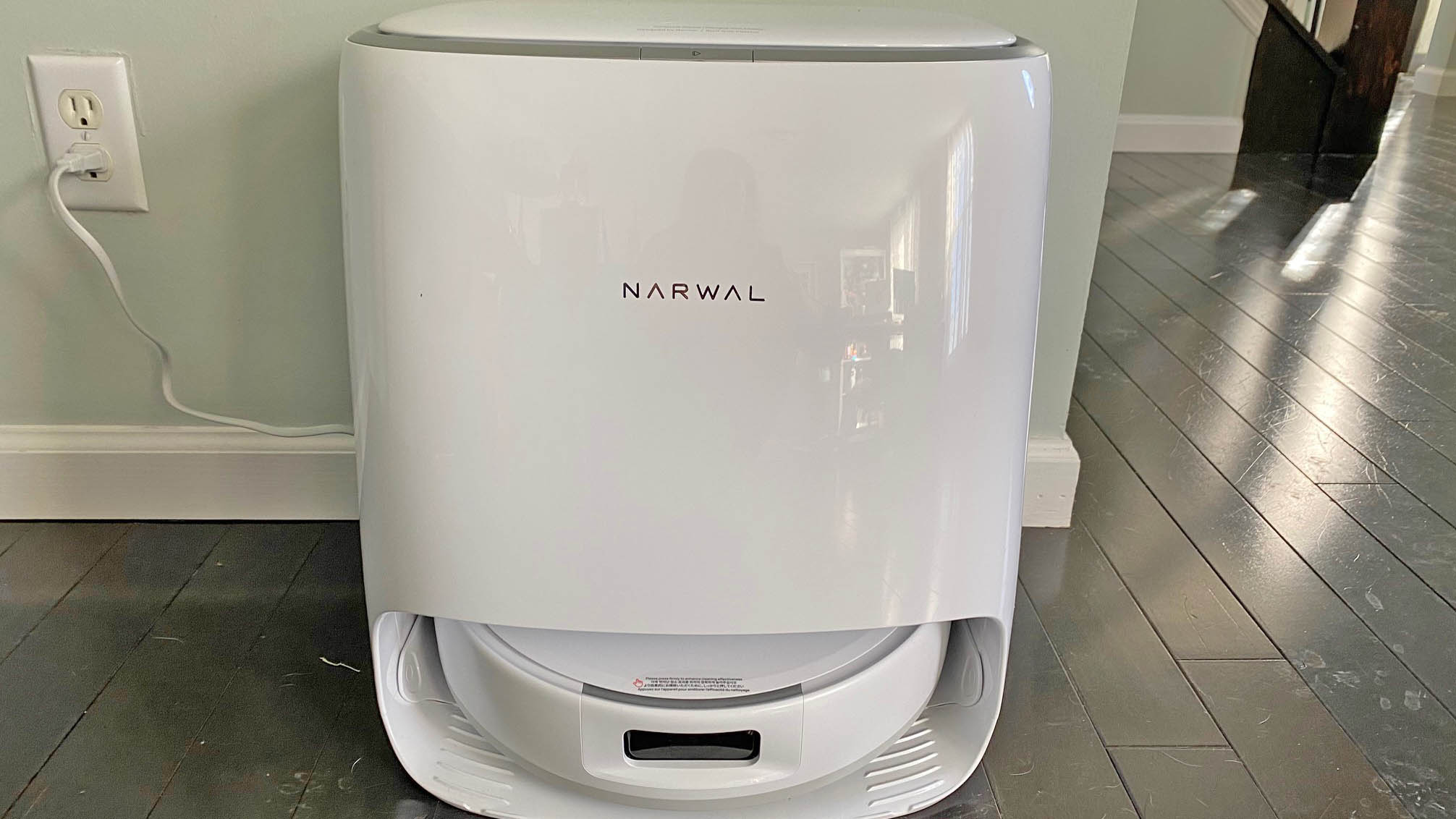
Specifications
Reasons to buy
Reasons to avoid
If you have a pet household, and struggle with fur on a daily basis, the Narwal Freo Pro robot vacuum and mop is a great, affordable contender.
In our tests, the hybrid performed incredibly well, and was powerful enough to pick up pet hair, debris and dust with ease, scoring a high 99%. Perhaps, the highlight here is its DualFlow Tangle-Free system that essentially traps long hair before it becomes a tangled mess.
Additionally, it comes with two, dual scrubbing mops to ensure a spotless clean each time. And it did particularly well removing stubborn stains on hardwood floors.
We particularly liked when it's in vacuum and mop mode, the Freo Pro automatically lifts the mop heads when the robot transitions from hard floor to carpet to prevent contamination. It's also equipped with DirtSense technology, which monitors wastewater during a mop cycle to match the floor’s dirt level.
Bear in mind, the all-in-one station might need extra storage space. However, it self-cleans the mops, auto dries, and even cleans the station automatically. So you'll never have to get your hands dirty!
The only downside is the App instructions were slightly confusing, and it did take a few minutes to set up the robot vacuum. However, you can schedule cleans, create multi-maps and draw no-go zones once all set.
The most important factor though is how it cleans, and performs well for the price, which is a worthwhile investment for pet owners.
- Read our full Narwal Freo Pro Robot Vacuum review.
Best cheap robot vacuum for automation
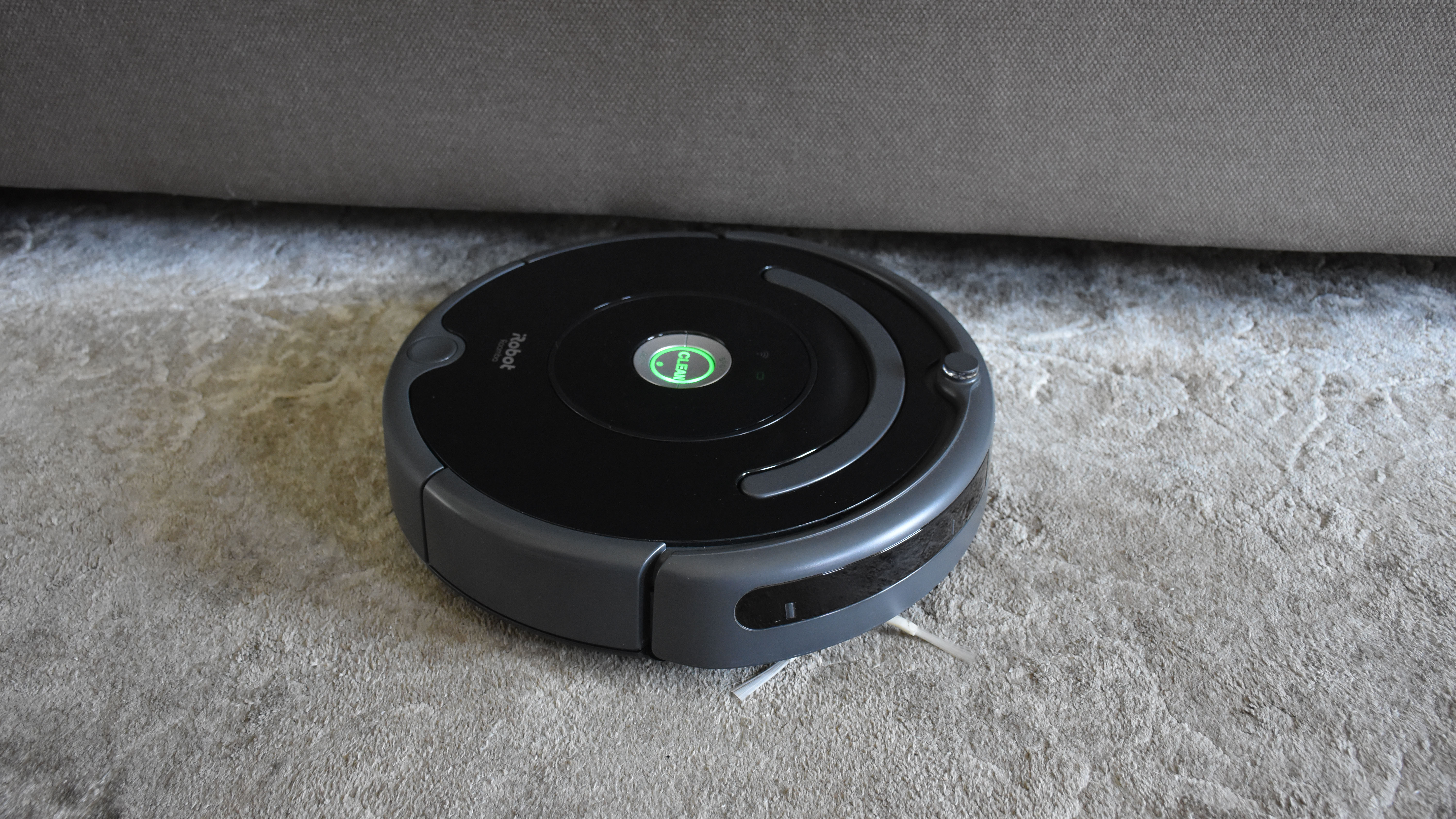
Specifications
Reasons to buy
Reasons to avoid
In early 2025, iRobot said it may face closure by the end of the year. While there's no suggestion anything will change right now, if the company did close, you may lose some of the Roomba 675's automation features, like integration with smart assistants and remote activation.
iRobot's Roomba 675 serves as the company’s entry-level robot vacuum but offers many of the same smart features as the best Roombas. This budget bump-and-clean model can controlled even while you're away from home thanks to its Wi-Fi connectivity.
The iRobot Home app gives this budget vacuum advanced automation features. These include geofencing which triggers vacuum runs when you leave your house and seasonal cleaning recommendations.
Though it doesn’t follow a predictable serpentine cleaning pattern, we did observe it methodically making its way along baseboards and around chair legs, and we were pretty pleased with its automatic dirt detection.
When the robot vacuum decides an area has excessive dirt or debris, it’ll spin around and clean that section more thoroughly with more passes. Roomba's budget bot also proved to be a capable performer in our lab tests, where it earned an overall average pickup score of 89.7.
The Roomba 675’s one weak spot was pet hair pickup, so if you’ve got furry friends, the iLife V3s Pro is the better option. If you can’t find it, check out its replacement, the Roomba 694, which offers nearly identical performance but lacks a carrying handle.
- Read our full iRobot Roomba 675 review
Best hybrid cheap robot vacuum
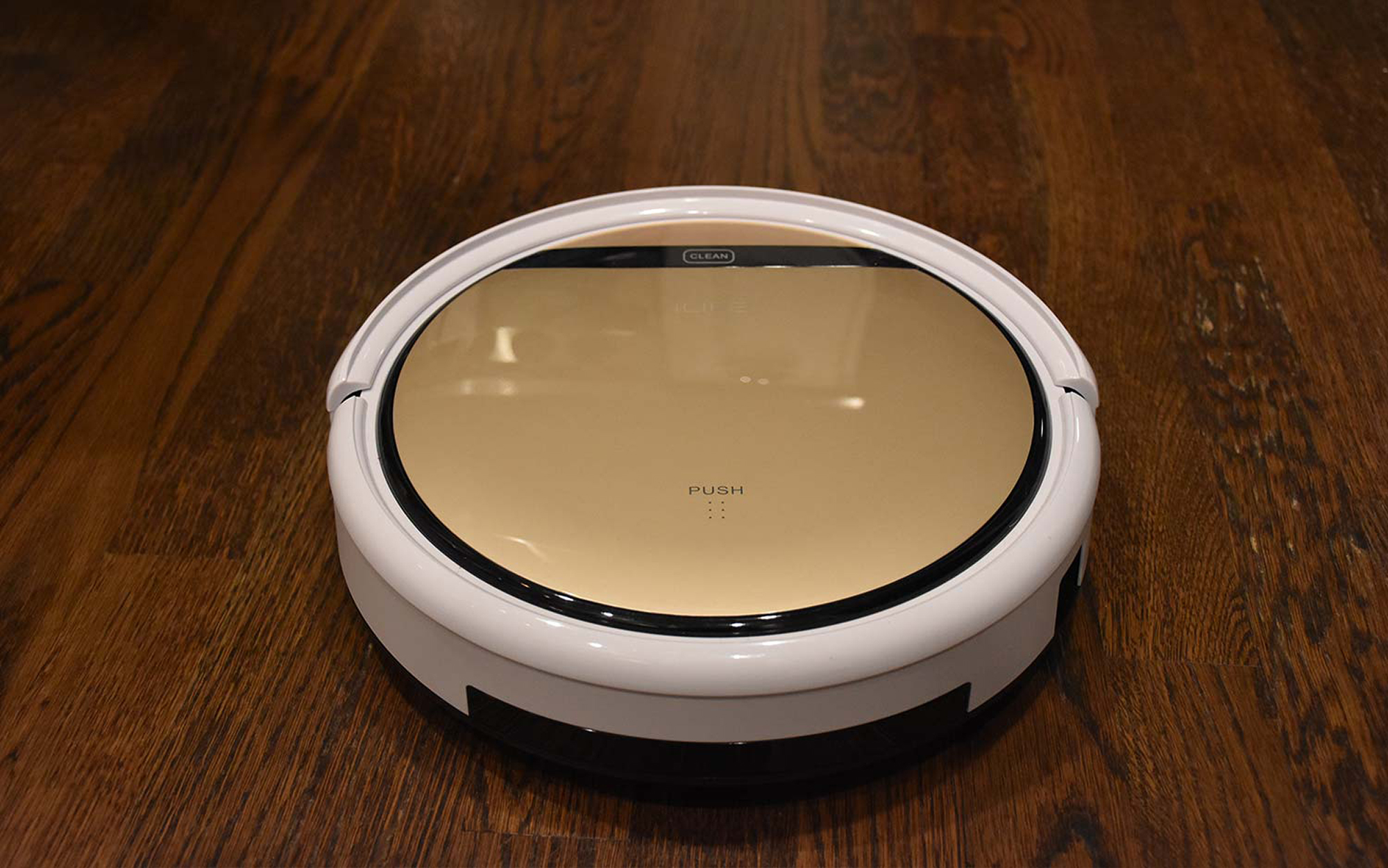
Specifications
Reasons to buy
Reasons to avoid
The iLife V5s Pro is an impressive hybrid robot vacuum that can mop floor and rid your home of pet hair. It has a water tank and microfiber pad for light floor mopping, so don't expect it to remove layers of dirt on each outing.
What we really liked about this cheap robot vacuum is how it excels at quietly picking up after furry family members. It’s a no-frills bump-and-clean bot that works by bouncing off walls and other obstacles, but we found that it did so gently, slowing down just before impact. In our lab tests, the V5s Pro earned high marks, averaging 99.1 on our cereal test and 97.3 on our pet hair test.
Unlike some more expensive hybrids, you can’t vacuum and mop simultaneously. Instead, you have to switch out the dustbin for a water reservoir and snap on a microfiber pad to the robot’s underside by hand.
While the V5s Pro’s mopping ability won’t have you tossing your manual mop in the trash, its water-only cleaning is just enough to make the floors look presentable before company arrives.
- Read our full iLife V5s Pro review
Best cheap robot vacuum with self-empty base
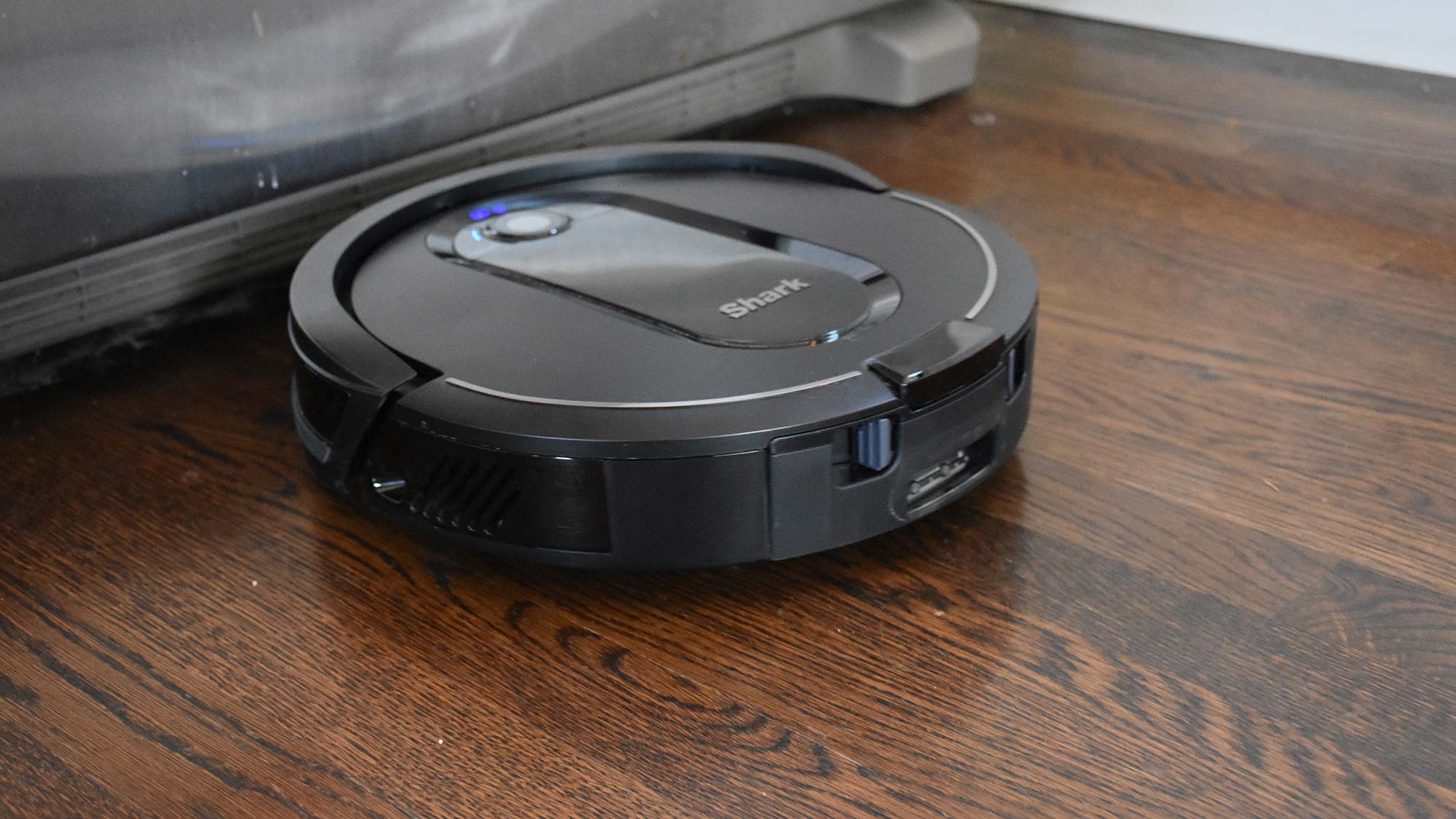
Specifications
Reasons to buy
Reasons to avoid
Shark's IQ robot vacuum comes with an auto-emptying charging dock so you won't even know it's there. From the Shark app you can name rooms, set invisible boundaries, and schedule cleaning times.
Our tester timed it to clean while away from home and only dealt with it to empty out its bagless dust bin every other month. Of course, you can always send it out to specific areas as needed through the app or with your smart home assistant. The command "Alexa, tell Shark to clean my kitchen" proved to be helpful for our messy cook of a tester.
During tested, we were impressed with its accurate room mapping and thorough row cleaning pattern with some of the highest scores for pet hair and kitty litter. Shark's strong suction power accurately pulled debris out from hard-to-reach spaces and didn't struggle with the most granular material types like kitty litter.
Even when it blew over some cat fur over in an initial pass, the machine made sure to nab it as it made its way down nearby rows. Once it finishes cleaning, the IQ backs itself into its bagless base and connects to a hose that sucks out and stores all of the debris for up to 45 days of passive cleaning.
- Read our full Shark IQ review
Also tested
We've tested many affordable robot vacuums at Tom's Guide. And while many vacs did a decent job, not every model made the final cut. However, if you still haven't found the right one on our list, the models below are still worth checking out.
Despite its small stature and budget price, this robot vacuum and mop hybrid did a great clean. This is thanks to its 6000 PA of suction power. In our tests, it impressed us with its pet hair suction, and managed to pick up every last bit of debris both on hardwood and carpet. Its only downfall was its mop cleaning and inconsistent mapping. However, its miniature size makes it perfect for smaller homes.
Read our SwitchBot K11+ review.
This Roomba model is a great-value hybrid robot vacuum, capable of cleaning up a variety of home debris and giving it a quick wet clean to remove surface level dirt. We were impressed with it's effectiveness, but also it's integration with the iRobot app for mapping, scheduling and voice-based controls.
How we test the best cheap robot vacuums
All of the robot vacuums we review are subjected to both our lab tests and in-home, real world use over several days. The test results, user experience, price, and features relative to competing models weigh into our overall rating.
Our lab tests are three separate tests run twice – once on hardwood and once on low pile carpet. In a 5-foot-by-5-foot area, we measure how effective each vacuum is at picking up 2 grams of dog hair, 20 grams of kitty litter, and 20 grams of Cheerios cereal.
As long as the dog hair is collected by some part of the robot vacuum, such as the side brush or main brush roll, it’s counted. Older models were subject to the same tests, but in a larger 15-foot-by-15-foot area.
Real world testing isn’t as rigid as our lab tests, though we test all of the features in each vacuum. Most commonly, this includes mapping out the first floor of the reviewer’s home and evaluating it for accuracy. This also includes how easy or hard it is to make map adjustments, such as room divisions and drawing no-go zones. We also look at the dustbin: Is it hard to access? How much force is needed to open the dustbin? Does dust go flying everywhere? How easy is it to clean the brush roll, side brush, and wheels?
Household terrain is also considered. Does the robot vacuum get caught up on small rugs? Is it able to cross a common threshold? Does it get stuck in a maze of dining room chairs? How about under the couch? These are just some of the questions we answer when evaluating each robot vacuum.
How to choose the best cheap robot vacuum
Robot vacuums start from as little as $100, but can go as high as over $1,500, so prices really do vary depending on the included features. Once you’ve got a budget in mind, you need to consider exactly what you need from your robot vacuum.
You should first take account of the predominant floor type in your home — is your home wall-to-wall carpets or is it mostly hard floors? Next think about pets — will your robot have to deal with shedding and potential obstacles such as pet poop? Some of the entry-level models don’t feature obstacle detection, which is important if you face this problem!
You should also think about connectivity. Would you rather program the robot vacuum on-board, via a remote, or using your smartphone or voice control? Wi-Fi connected robot vacuum cleaners are more affordable these days, but they’re still the more expensive option compared to non-connected models.
Finally, whichever robot vacuum you choose, remember that it’s going to need occasional maintenance. This means emptying the dustbin after each cycle, and cleaning as well as replacing the filter when necessary. If the brush bar becomes wrapped in hair or fur, that will need cutting free as well. Here are robot vacuum tips and tricks for keeping your home clean.
Bear in mind that self-emptying bases, which have become more commonplace as of late, will likely be off the table if you're shopping on a budget. You need to be prepared to spend $350+ to get one of these.
FAQs
Why are some robot vacuums so cheap?
While you can find some bad cheap robot vacuums, the main reason that the best cheap robot vacuums are available at a reasonable price is that they focus on the basics, and not the additional smart features you find on premium models.
This means you typically won't find self-emptying bases, live streaming, or AI analysis on budget models, but if you don't need these kind of features, then you can pick up a cheap robot vacuum to keep your house clean without breaking the bank.
Depending on the model and brand you land on, you do still get access to app-based controls, no-go zones and mapping. Plus, several will return to their charging bases automatically. But when we test a cheap robot vacuum, the main thing we look out for is performance; if it does the cleaning job well, that's the most important aspect.
Should you still buy a Roomba?
While the future of iRobot remains unknown for now, it does call into question whether you should buy a Roomba, and what to expect should closure happen.
We can only speculate that this would affect smart app connectivity with Amazon Alexa, or Google Home. This means that you would lose out on advanced features including precise mapping, scheduling, smart assistants or other extra settings.
If you do lose out on remote connectivity, you might want to check if manual operation would be suitable for your home and needs.
In any case, there are alternatives to iRobot that give the same power and performance.
Get instant access to breaking news, the hottest reviews, great deals and helpful tips.

As the Homes Content Editor, Cynthia Lawrence covers all things homes, interior decorating, and garden-related. She has a wealth of editorial experience testing the latest, ‘must-have’ home appliances, writing buying guides and the handy ‘how to’ features.
Her work has been published in various titles including, T3, Top Ten Reviews, Ideal Home, Real Homes, Livingetc. and House Beautiful, amongst many.
With a rather unhealthy obsession for all things homes and interiors, she also has an interior design blog for style inspiration and savvy storage solutions (get rid of that clutter!). When she’s not testing cool products, she’ll be searching online for more decor ideas to spruce up her family home or looking for a great bargain!
